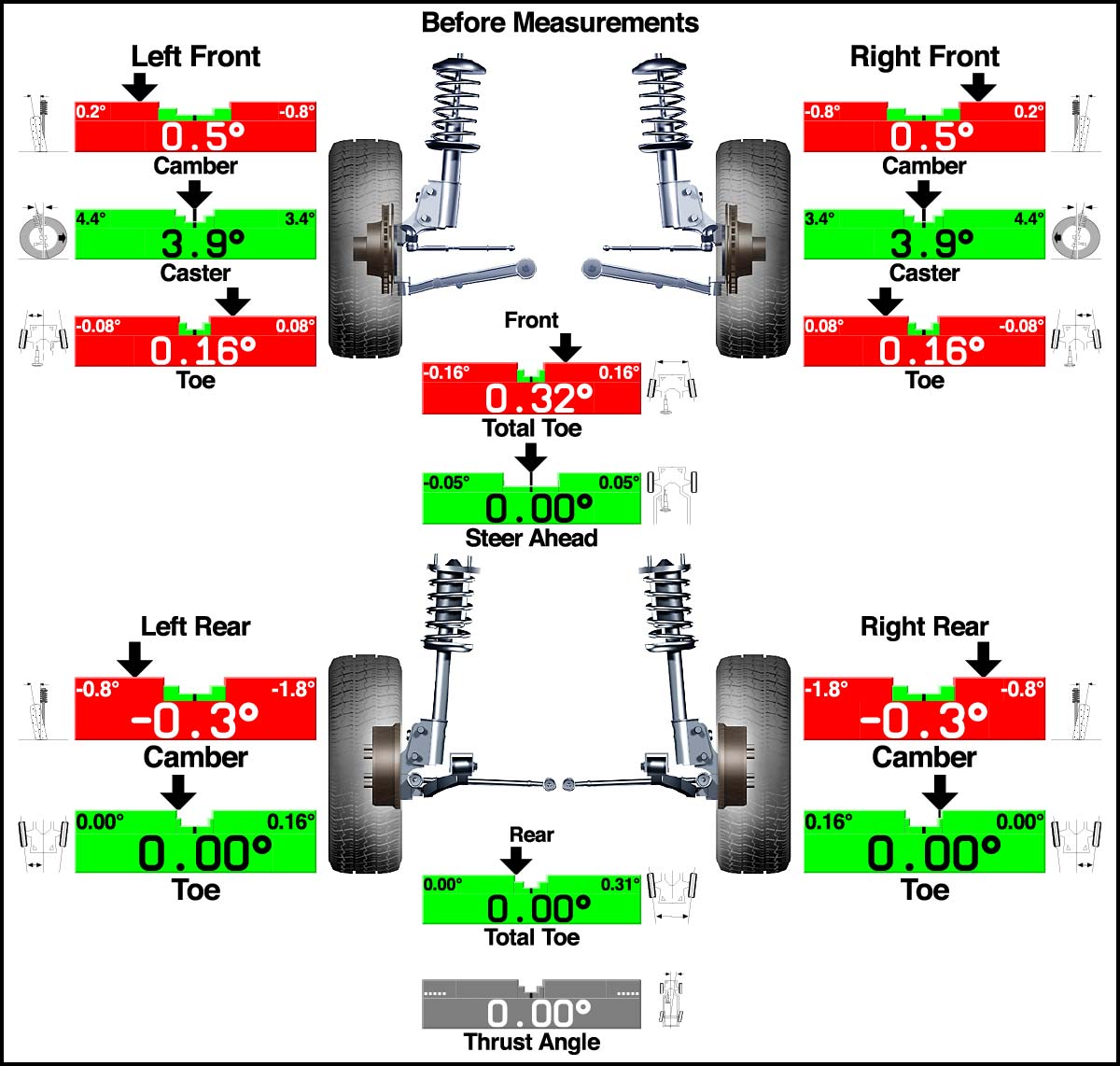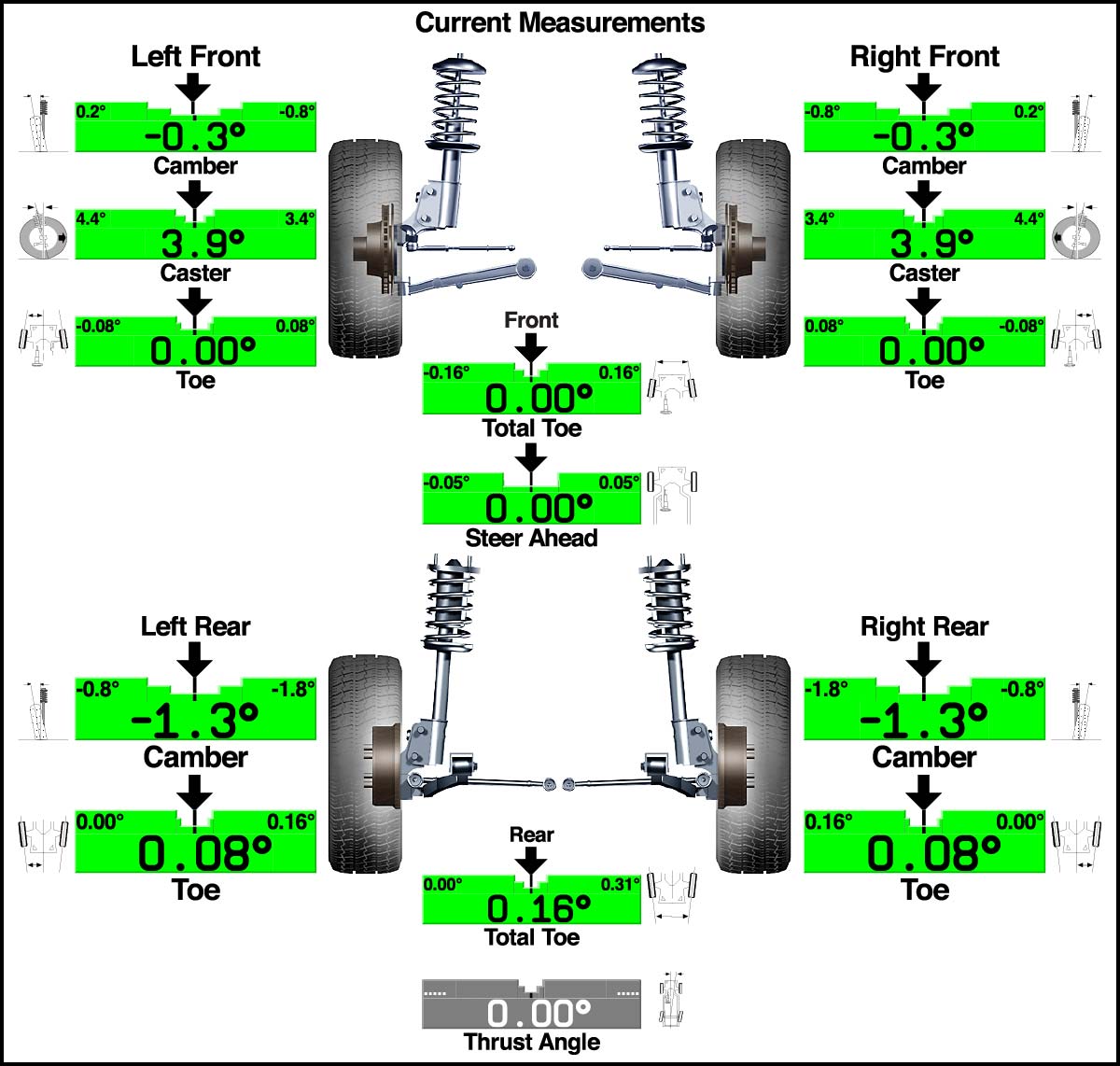What Can Bad Alignment Do to Your Car
Do I Really Need an Alignment?
Alignment assures your tires meet the road at the proper angle, your wheels are pointing straight and your tires are centered in the wheel wells. It adjusts the angles of your vehicle's wheels to original specs for best gas mileage, proper road contact, a smooth ride, and the longest tire life.
Common Signs of Wheel Misalignment
An alignment service is important to do when:
- You get new tires.
- You lower or lift your vehicle.
- Suspension parts that affect the tire angles are replaced or adjusted.
- You've had a fender-bender or a hard impact with a curb or road debris.
- It's been a year since your last one.
- You notice uneven tire wear, steering pull, or an off-center steering wheel.
We recommend an alignment after the installation of new tires. This helps you get the most life from your new tires. Wheel alignment checks are always advised after a significant impact or uneven tire wear is detected.
Also, get a check annually, or twice yearly if you typically travel on rough roads. Regular checks are important because alignment issues aren't always obvious. The wrong toe angle can go unnoticed and so can atypical tire wear. Cars usually go out of alignment gradually, so you may not realize how much it was impacting drivability, gas mileage or tire wear until it's corrected.
The most common signs of misalignment are pulling to one side while you're driving, unusual tire wear and/or a steering wheel that's off-center even though your vehicle is pointed straight. But these symptoms can have other causes, sometimes simpler and sometimes not.
Steering pull can be caused by road conditions. If the asphalt has grooves that are slightly farther apart than your car's axles, you may feel a pull as the tires on one side ride slightly higher. If the road is noticeably higher in the center, the vehicle may veer as the tires try to find a level surface.
Torque steer is a pull that happens during acceleration, from a difference in power being delivered to the wheels. A pull only during braking is probably from a caliper on one side sticking and not fully disengaging from the brake disc. A failing tire and improper tire rotation are two more causes of steering wheel pull.
Poor alignment may not be the issue if your steering wheel sometimes tugs in one direction and then the other. A bent or worn suspension part — ball joints, strut bearings or tie rods — could be to blame.
Atypical tire wear may be the result of worn shocks or struts, bushings or springs, or from carrying heavy loads (all of which can also put your vehicle out of alignment). Uneven wear can also be caused by driving on over-, underinflated or imbalanced tires.
An off-center steering wheel can be caused by worn steering or suspension parts. Just getting an alignment won't fix the root cause.
One last common point of confusion: Vibration while underway is often a symptom of out-of-balance tires, not bad alignment.
Lifting or lowering a vehicle will affect your toe, camber or caster angles. So will repair or replacement of suspension and steering parts — struts, shocks, ball joints, tie rods, bushings or control arms. If one of these components is damaged, it's a pretty good bet your vehicle's alignment is out of spec. If you don't fix them before your vehicle is aligned, you'll soon have the problem recur.
Tips Before Getting Service
Because the measurements are very fine, misalignment is not something you can see by just eyeballing whether the wheels and tire angles look right. But an experienced tire technician will usually know if you're overdue for an alignment just by looking at your tire wear.
Here's what to know if the service is recommended:
- If you have a damaged suspension part, replace it first. Worn or bad parts will put your vehicle right back out of spec.
- The technician may recommend a thrust alignment or a four-wheel alignment. Here's a primer to understand what they're talking about.
- Before service, let the tech know you'd like a printout showing what your alignment measurements were prior to the work being done and the final settings for your records. You can verify the job was truly necessary. Here's an example of what you'll see.
Measurements Before Alignment:

Measurements After Alignment:

While looking at existing tire wear is one way to identify misalignment, It's ideal to have your vehicle aligned annually to help catch and correct any misalignment issues before you experience early and unnecessary tire wear. Regular alignments are part of basic maintenance that help you get full mileage out of your tires.
Schedule an Appointment
What Can Bad Alignment Do to Your Car
Source: https://www.lesschwab.com/article/do-i-really-need-an-alignment.html
0 Response to "What Can Bad Alignment Do to Your Car"
Post a Comment